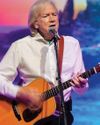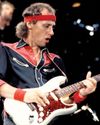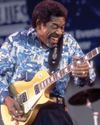Want to bring more expression into your music? Then join Dr Milton Mermikides as he provides a fascinating insight into timing, or how ‘placing’ your notes is vital for feel.

Music notation is an extremely useful tool as it reduces the immense complexities and variations in the ‘sound domain’ (with all its infinitesimal molecular vibrations) into the important musical parameters of pitch and rhythm (with some dynamic, timbre and expression information thrown in). This makes it a highly economical way of storing, communicating, reproducing and conceptualizing music. It allows us to quickly and efficiently capture musical ideas, transfer them between people who can read music (even if they don’t speak the same language) and across time from moments to centuries, a time capsule of musical intent.
From a contemporary perspective, comparing the hugely disparate file sizes of a music notation document to (even a file compressed) audio file will give you some idea of the level of reduction involved. In order to achieve this remarkable economy, much of the sonic information is rejected in order to prioritize a few features. More specifically, conventional notation presents notes as existing on a ‘grid’ of specific pitches (almost always 12 in each octave), and rhythms on a similar -albeit more finely sliced -grid of discrete points. With this system anything that falls between ‘important’ points on the grid may be considered any combination of inaccurate, approximate, tolerable or loose.
Bu hikaye Guitar Techniques dergisinin November 2017 sayısından alınmıştır.
Start your 7-day Magzter GOLD free trial to access thousands of curated premium stories, and 9,000+ magazines and newspapers.
Already a subscriber ? Giriş Yap
Bu hikaye Guitar Techniques dergisinin November 2017 sayısından alınmıştır.
Start your 7-day Magzter GOLD free trial to access thousands of curated premium stories, and 9,000+ magazines and newspapers.
Already a subscriber? Giriş Yap

THE MOODY BLUES
This month Stuart Ryan delves into the picking style of this British prog legend whose acoustic guitar has powered many a Moody Blues song.

WAYNE KRANTZ
This issue Nick Mellor provides an insight into this brilliant jazz stylist, focusing on his approach to improvising over static chords.

OPEN G TUNING
Open tunings are great fun and can help create exciting new ideas. Simon Barnard shows how to incorporate open G tuning into your playing.

RODRIGO GOUVEIA
Last month we featured Mateus Asato, and mentioned the importance of the neo-soul style in his playing. Here we turn to his fellow Brazilian, the master of neo-soul fusion.

MARK KNOPFLER
Our topic this month is a master craftsman as both guitar player and songwriter. His style is unique and his influence spreads far and wide.

U2
Martin Cooper checks out the chiming pedal delay tones of this stadium-filling band from Dublin, Ireland, and guitarist The Edge.

LUTHER ALLISON
It’s blues with a touch of soul this month, as David Gerrish explores the dynamic, expressive style of an often overlooked Chicago bluesman.

JOHANN KASPAR MERTZ Capriccio
This month Declan Zapala explores the music of Austria at the turn of the Romantic period with a fiery caprice to level up your fingers and unlock your inner virtuoso.

THE CROSSROADS Michael Landau
John Wheatcroft explores the playing of a session ace _ and blazing blues-rock maestro who graces the top-flight m band of singer-songwriting legend, James Taylor.

VIDEO MASTERCLASS Troy Redfern
This month GT welcomes this slide guitar virtuoso. If you've been wanting to take your slide playing to the next level then this is one's for you. With Jon Bishop.